Library is a building or room containing collections of books, periodicals, and sometimes films and recorded music for use or borrowing by the public or the members of an institution. Libraries are knowledge powerhouses. They have served as the major source of knowledge transfer generation after generation regardless of the time barrier. If you get the chance to visit some of the world’s largest libraries, you’ve never seen so many books in all your life. The world has excelled in all walks with the help of knowledge that has been preserved in bookish form and stored in world’s biggest libraries. Here we bring to you a list of 10 of the world’s largest libraries based on the collection of books that each one of them possesses.
1.Library Of Congress
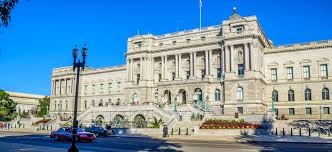
It is located in Washington, D.C., the Library of Congress is the national library of the United States and the largest library in the world. Collection of books are 162 million. Its collection was growing at a rate of about two million items per year. It is established in April 24, 1800. The John Adams Building, completed in 1939, received its current name in 1980 to honour the president, who is in 1800 signed the act of Congress establishing the library. The Adams Building was built in Art Deco style and faced with white Georgia marble. The Library of Congress is the largest library of the world in terms of number of items stored and shelf capacity. It officially serves the United State Congress for research purposes. The collection includes more than 32 million catalogued books and other print materials in 470 languages, more than 61 million manuscripts, over 1 million US government publications, 1 million issues of world newspapers, 33,000 bound newspaper volumes, 500,000 microfilm reels, more than 120,000 issues comic book, 5.3 million maps, 6 million works of sheet music, 3 million sound recordings, more than 14.7 million prints and photographic images including fine and popular art pieces and architectural drawings.
Some of those materials include one of the smallest books in the world (you have to turn the pages with a needle). James Billington served as the Librarian of Congress in Washington, D.C., from 1987 to 2015. He earned his doctorate from Oxford University. The Library of Congress serves members, committees, and staff of the U.S. Congress, other government agencies, libraries throughout the country and the world, and the scholars, researchers, artists, and scientists who use its resources. It is the national centre for library service to the blind and physically handicapped, and it offers many concerts, lectures, and exhibitions for the general public. The continued growth of the collection in a wide variety of formats during the 1980s and ’90s necessitated the off-site relocation of some materials to storage facilities in Fort Meade, Maryland, and to the Packard Campus for Audio Visual Conservation Center in Culpeper, Virginia, the library’s state-of-the-art facility for audiovisual preservation.
2.British Library, UK
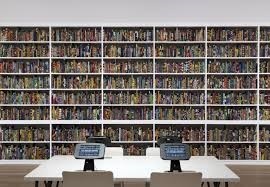
British Library, national library of Great Britain, formed by the British Library Act (1972) and organized by July 1, 1973. British Library serves as the national library of United Kingdom which is located in London. It is also the second largest library of the world. Collection of books are more than 150 million in this library.The British Library holds more than 25 million printed books as well as hundreds of thousands of periodicals, microfilms, rare manuscripts, and titles in electronic form. Its special offerings include the Oriental and India Office Collections, the National Sound Archive, printed music, a map library, and philatelic materials. The British Library adds some 3 million items every year occupying 9.6 kilometres of new shelf space. There is space in the library for over 1,200 readers. In over 400 languages including books, magazines, manuscripts, maps, music scores, newspapers, patents, databases, philatelic items, prints and drawings and sound recordings. The British Library is a major research library, with items in many languages and in many formats, both print and digital.
An interesting fact about the British Library is that it will take you 80,000 years to see the entire collection if you are seeing 5 items daily. Their impressive collection includes handwritten Beatles lyrics and an original draft of Chapter 10 and 11 from Jane Austen’s Persuasion. Telling the stories from over 3000 years of human experience, the treasures from our collection include everything from ancient Chinese oracle bones, Magna Carta, the Lindisfarne Gospels and Leonardo da Vinci’s notebook to the Beatles’ lyrics and musical scores by Beethoven, Handel and Chopin. The British Museum library was long housed in the main building of the British Museum, in Bloomsbury, London. The centrepiece of the British Museum library was the huge round dome-ceilinged Reading Room, which was designed by Sydney Smirke in association with the librarian Anthony Panizzi and completed by 1857. The museum (with its library) was founded in 1753 on the basis of the collections of Sir Hans Sloane; Edward and Robert Harley, earls of Oxford; and Sir Robert Cotton. As the library holdings grew in the 20th century, additional space was acquired in Bloomsbury, and annexes were opened at Bayswater and other London locations. In 1962 the National Lending Library for Science and Technology was established at Boston Spa, Yorkshire. The Newspaper Library became part of the British Library in 1973. It is classified as a Grade I listed building “of exceptional interest” for its architecture and history..
- Library And Archives Canada
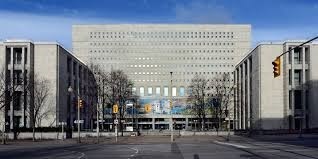
Collection of books are more than 54 million. Canada’s national library, located in Ottawa, acquires and preserves Canada’s documentary heritage. The Dominion Archives was founded in 1872 as a division within the Department of Agriculture and was transformed into the autonomous Public Archives of Canada in 1912 and renamed the National Archives of Canada in 1987. The design is the direct result of an unprecedented public co-design process that asked Ottawa residents, Indigenous communities, and Canadians from across the country to provide inspiration at every stage. The National Library of Canada was founded in 1953. In 2004, Library and Archives Canada (LAC) combined the functions of the National Archives of Canada and the National Library of Canada. LAC’s stated mandate is:
• to preserve the documentary heritage of Canada for the benefit of present and future generations;
• to be a source of enduring knowledge accessible to all, contributing to the cultural, social and economic advancement of Canada as a free and democratic society;
• to facilitate in Canada co-operation among communities involved in the acquisition, preservation and diffusion of knowledge;
• to serve as the continuing memory of the Government of Canada and its institutions.
Among its collection, plenty of antique photos are existed. LAC’s holdings include the archival records of the Government of Canada, representative private archives, 20 million books acquired largely through legal deposit, 24 million photographs, and more than a petabyte of digital content. Some of this content, primarily the book collection, university theses and census material, is available online. In homes, schools and libraries across Canada, people are looking for evidence of what it means to be a Canadian. ARCHIVESCANADA.ca is a gateway to archival resources found in over 800 repositories across Canada – it’s your gateway to Canada’s collective memory.
- New York Public Library
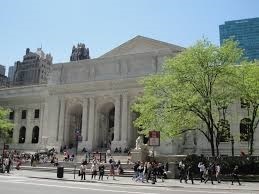
The New York Public Library is in Manhattan and it’s the fourth largest library in the world. As of 2010, the research collections contain 44,507,623 items (books, videotapes, maps, etc.), while the branch libraries contain 8,438,775 items. It is a private, non-governmental, independently managed, nonprofit corporation operating with both private and public financing. Collection of books are more than 53.1 million. The collections have been organized into more than 100 major topics, ranging from “Accents and Dialects” to “Women’s Studies” with others such as “Baseball,” “Computer Science,” “Gay and Lesbian Studies,” “Immigration,” “Judaica,” “Theatre,” and “U.S. History” in between. Very often, the expendable products of bygone ages are viewed today as treasures, and the Library’s stacks of old newspapers, including the long-defunct New York Atlas, have provided endlessly rich material for scholars and writers. The building is also home to the Library’s historic children’s materials, including the original stuffed animals that inspired the Winnie-the-Pooh children’s classics, as well as circulating collections for children.
In combination with the lending collections, it is the most comprehensive library collection ever brought together for the free use of the public. The library has branches in the boroughs of the Bronx, Manhattan and Staten Island and affiliations with academic and professional libraries in the New York metropolitan area. The New York Public Library also has four research libraries, which are also open to the general public. The “New York Public Library” name may also refer to its Main Branch, which is easily recognizable by its lion statues named Patience and Fortitude that sit either side of the entrance. The branch was declared a National Historic Landmark in 1965, listed on the National Register of Historic Places in 1966, and designated a New York City Landmark in 1967. Today the Library continues to make major investments in its most distinctive collections, especially in unique primary source materials.
- Russian State Library
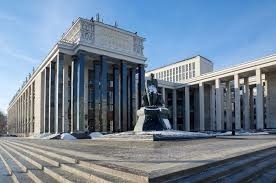
Collection of books are more than 44.4 million. The Russian State Library was established in 1862, and even has a nickname: “Leninka.” It is located in Moscow. It was named the V. I. Lenin State Library of the USSR from 1925 until it was renamed in 1992 as the Russian State Library. The library has over 275 km of shelves. There are items in 247 languages of the world, the foreign part representing about 29 percent of the entire collection. The Russian State Library (RSL) is the largest library in Russia, the fifth largest library in the world. It was a part of the Moscow Public and Rumyantsev Museums. Now the Russian State Library stores in its holdings books, documents and artefacts. More than 800 thousand people visit the library annually and about 100 thousand new library tickets are issued. There are 36 reading rooms in the RSL, where more than one and a half thousand people can work at the same time. Any citizen of Russia or other state above 14 years old can become a user of the Library.
It is important for the Library not only to enlarge its collections, but also to make them as accessible as possible, paying attention to the preservation of rare and valuable editions. Access to copyrighted documents is only possible from the Library premises. At the end of 2014 by the decision of the Ministry of Culture of the Russian Federation the Russian State Library was appointed the operator of the National Electronic Library (NEL). NEL is a modern project aimed at free access of readers to the collections of key Russian libraries through the integrated portal and search system. The Library is developing and looking for new forms of interaction with the reader. The best and the most interesting of the RSL collections is demonstrated at exhibitions. In 2016 the Russian State Library opened the new museum space for major exhibitions Ivanovsky Hall. On traditional events of LibraryNight, LibraryDay and Open Doors Day experts and everyone are welcome to acquaint with the work of the Library.
- National Diet Library

The National Diet Library is located in Tokyo. It was established in 1948 for the purpose of assisting members of the National Diet of Japan, in researching matters of public policy. Collection of books are more than 41.88 million in this Library. The library is similar in purpose and scope to the United States Library of Congress. The National Diet Library has been actively working on digitization of its collections. The National Diet Library (NDL) consists of two main facilities in Tokyo and Kyoto, and several other branch libraries throughout Japan. It is organized on the system of the U.S. Library of Congress, serving legislators and the nation at large through various major divisions and 35 branch libraries. It is Japan’s only national deposit library and also the country’s parliamentary library. The “Digital Library from the Meiji Era”, which was opened to the public in 2002, carries full-text digital images of about 127,000 volumes of 89,000 titles of the books published in the Meiji era (1868-1912). In addition, it has been promoting copyright clearance and digitization of most of the books published in the Taisho era (1912-1926).
The National Diet Library is the successor of three separate libraries: the library of the House of Peers, the library of the House of Representatives, both of which were established at the creation of Japan’s Imperial Diet in 1890; and the Imperial Library, which had been established in 1872 under the jurisdiction of the Ministry of Education. National Diet Library, Japanese Kokuritsu Kokkai Toshokan, is combining the libraries of the upper and lower houses of the Diet with the collections of the former Imperial Library. The “Web Archiving Project (WARP)” is a project to preserve information gathered from the Internet for the sake of future generations. We have collected, selected Internet resources with license agreements, and provided about 1,500 online periodicals and 1,900 websites.
- Bibliotheque Nationale De France
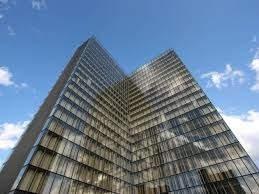
Paris is the home of the Bibliotheque Nationale de France, a national repository of everything published in France and home to the beautiful Oval Reading Room. Collection of books are more than 40 million in this Library. It contains a portion of the modern manuscripts and archive documents like brochures, programs, screenplays, press clippings, typescripts, correspondences, letters, autographs on performing arts and music from the Richelieu-Louvois Library. Books and periodicals kept in the storage and on the shelves. Documents in audio format (78 rpm recordings, phonograph records, compact discs, and audio cassettes), video format (videotapes and videodiscs), multimedia and electronic formats (CD-ROMS, DVD-ROMS, video games etc.). It contains Objects: brass, carved wood, lithographic stones, fabrics etc. It also contains Iconographic documents: prints, photographs, posters and Printed and handwritten sheet music.
Throughout its history, it has always performed the task of collecting and preserving national and global collections in its care, in any form, for the benefit of all. It is digital library, Gallica was launched in 1997. It is one of the oldest in the world, located in Paris. On the site Francois-Mitterrand, a building whose four angular towers symbolize four open books, overlooking the banks of the 13th arrondissement of Paris, more than 15 million books and printed works are preserved. The garden can be found in between the 4 towers: it can be seen from all over the Library, but entry is not permitted.
- National Library Of Russia
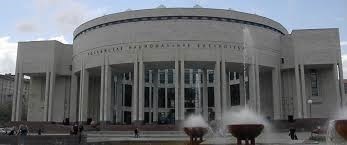
The National Library of Russia is in St Petersburg, and has been digitizing many titles — over 80,000 titles are available to view electronically. The Imperial Public Library was established in 1795 by Catherine the Great. Collection of items are more than 36.5 million in this Library. The National Library of Russia in Saint Petersburg ,is not only the oldest public library in the nation, but also the first national library in the country. It has the second richest library collection in the Russian Federation, a treasury of national heritage, and is the All-Russian Information, Research and Cultural Center. Over the course of its history, the Library has aimed for comprehensive acquisition of the national printed output and has provided free access to its collections. It is known as the Imperial Public Library. The idea of a public library in Russia emerged in the early 18th century but did not take shape until the arrival of the Russian Enlightenment.
The cornerstone of the foreign-language department came from the Polish-Lithuanian Commonwealth in the form of Załuski’s Library (420,000 volumes), nationalized by the Russian government at the time of the partitions. The Polish-language books from the library (numbering some 55,000 titles) were returned to Poland by the Russian SFSR in 1921. For five years after its foundation, the library was run by Comte Marie-Gabriel-Florent-Auguste de Choiseul-Gouffier. The stocks were arranged according to a specially compiled manual of library classification. In 1810, Emperor Alexander I approved Russia’s first library law stipulating, among other things, that two legal copies of all printed matter in Russia be deposited in the Library.
- Royal Danish Library
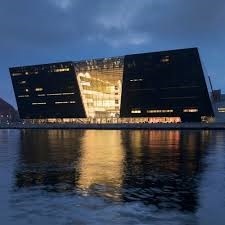
The Royal Library in Copenhagen is the national library of Denmark. Collection of books are more than 35.1 million in this Library and it is largest in the Nordic countries. In 2017 it merged with the State and University Library in Aarhus to form a combined national library. The combined library organisation is known as the Royal Danish Library. The “Black Diamond” is a characteristic new library building at the waterfront of Copenhagen. The building from 1999 is designed by the Danish architects Schmidt, Hammer and Lassen. The Library building is shiny, black facets mirror the sea and the sky at the harbour front. It is an extension to the Royal Library. It is founded in 1648. It houses many ancient manuscripts, notably The Gutenberg Bible and the manuscripts and letters of Hans Christian Andersen. The name refers to the prismatic sharp edges and the black marble plates and glass of the exterior, that reflects the water of the harbour. Also from the wave-like balconies of central foyer, that cuts into the building as an 24 meter high atrium, there is a panoramic view over the harbour.
The variety of cultural activities of the new building has turned The Royal Library into a central cultural centre of Copenhagen as part of the harbour promenade. The ceiling of the bridge between the old and the new is decorated by the Danish artist Per Kirkeby. In the old building of The Royal Library a Jewish museum has been designed by Daniel Libeskind in 2004 with sloping floors and light wooden interior. The seven stories of the building contain not only traditional library functions such as the four new reading rooms, but also a concert hall, exhibition galleries, bookshop, cafe and restaurant. It contains numerous historical treasures, and a copy of all works printed in Denmark since the 17th century are deposited there. A large incision cleaves the building into two formations and gives light to the atrium inside. The atrium connects the city with the sea outside as well as the old and new library buildings. The glass facade is held by iron girders weighing approximately one metric tonne per metre.
- The National Library of China

The National Library of China in Beijing has many rare Chinese items such as ancient books, oracle bones and tortoise shells from the Shang dynasty, and Buddhist manuscripts from the sixth century. Collection of items are more than 35.1 million in this Library. In 1916, the library received depository library status. In July 1928, its name was changed to National Peiping Library and was later changed to the National Library. The design of KSP Jurgen Engel for the new National Library of China in Beijing was the winning entry in an international competition. It is founded in 1909. The tripartite design of the library, symbolizing the past, present and future, consists of a solid base, a glazed center section enclosing structural cores and a steel-clad volume at the top. The stone-clad plinth houses the books and documents, representing China‘s rich cultural tradition. The steel box at the top houses the digital library. Weighing 10,388 tons, the 120 × 105 m earthquake-proof steel of the roof structure is designed as a steel lattice framework. Six reinforced cores transfer this load to the base, thus enabling the column-free floating ceiling over the grand reading room.
The glazed center section accommodates the public information area, access to reading rooms, foyer and cafeteria – all activities anchored to the present. The NLC faces the challenges of readership in the technological age. The creation of the National Digital Library is part of a strategy to combat this trend and to provide integrated services that include the availability of 10,000 e-books, mobile phone enabled library services and the use of RFID technology for the ease of locating items. Web pages, e-journals, blogs and so on – that appear only electronically.” With only 20 % of the National Library’s holdings available to the public in digital form in 2008, the Digital Library will greatly increase the reach of the National Library.
